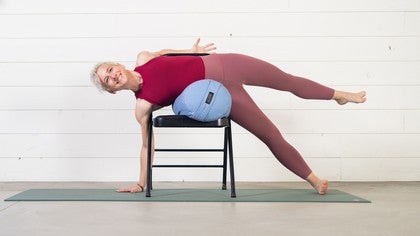
Making Your Yoga Studio Unfriendly to the Coronavirus
Our deepest sympathies to those of you already affected by this confusing viral outbreak. Our hearts and prayers are with you and your families.
Since the publication of this article, it has been determined that the only way to keep your yoga studio and yoga students safe is to close and go virtual. Read how Kari Sims is doing it.
The Center for Disease Control (CDC) currently believes that the COVID-19 is mainly being spread in two ways:
Person to person contact:
- Between people who are in close contact with one another (within about 6 feet).
- Through respiratory droplets produced when an infected person coughs or sneezes. These droplets can land in the mouths or noses of people who are nearby or possibly be inhaled into the lungs.
From contact with infected surfaces or objects:
By touching a surface or object that has the virus on it and then touching your own mouth, nose, or possibly your eyes. This is not thought to be the main way the virus spreads.For those of you running yoga studios out there, there are several extra precautions you can take to help prevent unintentional spreading of this virus. Here are 12 ideas to help your community feel safe and stay healthy. These are not full proof solutions.
1. Encourage sick students to stay home
The open door, open arm policy of most yoga studios can make it emotionally difficult to exclude anyone from practicing. The comfort of being together is generally how we navigate these uncertain times. However, part of your role as an owner or manager of a yoga studio is to hold a safe space. Safe containers require boundaries.
2. Encourage everyone to wash their hands
Make it easy for everyone (teachers and students) to wash their hands once they enter the studio. Provide the soap and paper towels for drying. If your bathroom has a key, provide tissues or similar solution to reduce everyone having to touch the same key. Know that this policy might mean that class does not start on time.
3. Provide hand sanitizer
While at the moment seemingly impossible to buy online you can probably still get some locally.
4. Encourage teachers to minimize physical contact with students
Physical contact, especially hands on adjustments, in yoga classes is under a great deal of scrutiny anyway. It’s a perfect time to work on more effective verbal cues and demonstration skills. If touch is your main modality through which you show love and care, think of this period as a sadhana, an opportunity to break an unconscious pattern. As humans, we often use touch as a way of making sure everything is okay. Removal of this habit can deepen your trust in the Order of Things, as well as reduce the risk of your getting sick.
5. Encourage students to stop touching their faces
Our quirky human need to touch our faces is one of the primary reasons these viruses spread so fast. If your class includes cupping the eyes before savasana, perhaps remove that from your sequence.
Also, it’s common to sneeze and cough into our hands. The World Health Organization(WHO) suggests “covering your mouth and nose with your bent elbow or tissue when you cough or sneeze. Then dispose of the used tissue immediately.”
6. Share useful non-inflammatory information
There is a lot of scary speculation flying around. Reading about deaths and outbreaks near or around you causes a natural internal panic. This episode of New York Times’ The Daily, The Coronavirus Goes Global, provides context and perspective on the scale and relationship to other global outbreaks. Here's another great practical piece on how to prepare.7. Remove all the community mats and blankets
Stock up on mats and blankets for sale, and provide links to your favorite yoga prop companies. Thoroughly scrub those old mats and let them dry out in the sun. Blankets can be washed and dried in bulk at a laundromat. Only bring them back as feels safe and correct to do so.
8. Cover bolsters with washable towels
Ultimately, it’s best if everyone brings their own towels. Until that is habit, you could consider providing cheap washable terry cloth towels for people to use when using bolsters.
9. Spray blocks and straps with disinfectant
After every class, spray the blocks and straps. Choose or make a solution that will work. Even better if people start to bring their own props.
10. Reduce class sizes
Reducing class sizes will allow everyone to have more personal space and reduce the risk of exposure.
11. Clean studio and restroom regularly
Make sure you have a regular schedule to clean and disinfect your studio. This includes wiping down surfaces and door handles in studios, reception and retail areas, and importantly, restroom areas.
12. Get some fresh air!
If possible, open windows and doors to get fresh clean air into your studio.
If you are worried about freaking people out, take a cue from Kari Sims Anthon of Life.Love.Yoga in Sisters Oregon who helped develop this list and recently took precautions. “While I don’t want to give into, or promote any undue fear, I feel like there are too many unknown variables at this point to not take this seriously. I always want my students to feel safe, happy, and healthy while practicing with us, so it just makes logical sense to take some precautionary steps to help with that intention.”
We recommend staying informed and responding appropriately as this global situation is updated. Let us know what you are doing, and post links to other resources. Let’s all stay well together.
Comments
No comments yet. Be the first!










You need to be a subscriber to post a comment.
Please Log In or Create an Account to start your free trial.